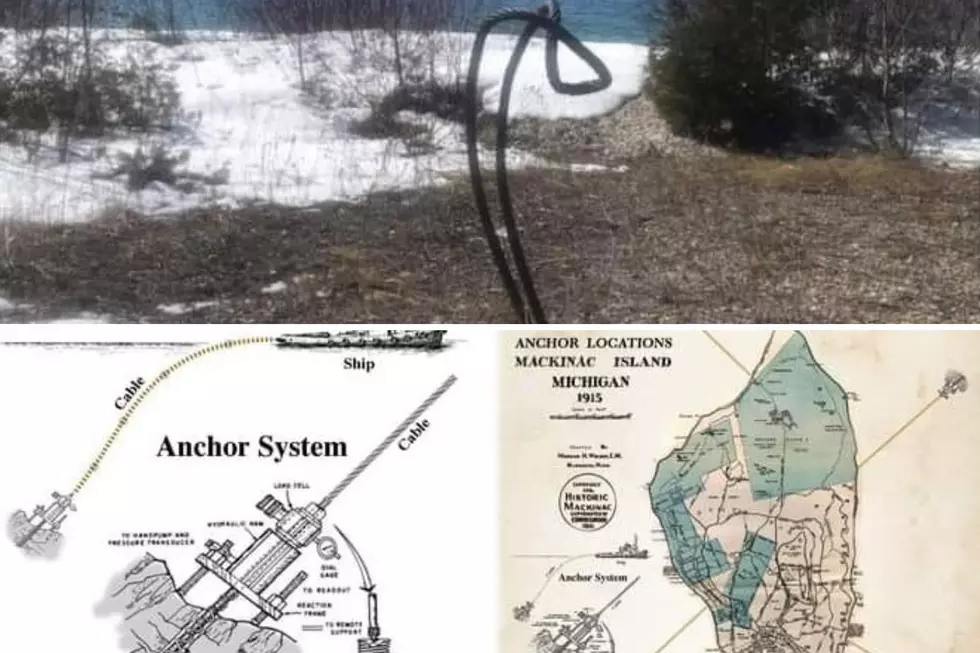
Michigan Ghost Towns In The Lower Peninsula – Part 2
As our state developed from the 1600s to present day, many small towns and villages were abandoned and left to be reclaimed by nature. We now refer to many of these places as Michigan Ghost Towns and you can still find remains of old buildings, roads, railways, and ports at the original locations.
Throughout this series we will be listing these towns, where you can find them, and what remains. First we will start with ghost towns in the lower peninsula and then moving north to the UP. This is the second installment of the series. You can check out the first here.
- 1
Deward
Crawford CountyDeward was a small lumber town in Crawford County from 1901 until 1912. The town was constructed and abandoned according to the will of David Ward. He owned the large forest that the town was constructed in and in his will, he allowed for a 10 year period in which the forest could be commercially lumbered. After the lumbering was completed the town was abandoned. You can still see some stone foundations in the woods that now inhabit the area. The woods are now a state forest and are known as, aptly enough, Deward.
- 2
Doyle
Macomb / St. Clair County LineDoyle was a small town on the Macomb and St. Clair county line that boasted a thriving population of 12 in 1895. The town had a post office and a railroad stop, but not much information about it is available. You might be able to find some old railroad tracks, but the town's remains have been hidden by redevelopment.
- 3
Duncan City
CheboyganDuncan City was a small logging town based around a saw mill on the Cheboygan River. The city was founded in 1853 and had a peak population of about 500. The city even had its own Post Office that was established in 1846. Three major factors contributed to the decline and disappearance of the city. First, the Cheboygan River was dredged to allow larger ships to pass by Duncan City and dock directly in Cheboygan. Second, the saw mill that was the life blood of Duncan City burned down. And finally in 1870 the limits of Cheboygan grew to include the land Duncan City was established on. The land has been redeveloped and is currently private residential. There are no remnants of the city.
- 4
Edgewood
GratiotEdgewood sits right on the border of Lafayette and Hamilton Townships in Gratiot County. The town was founded in the mid to late 1800s and had its own Post Office from 1874 – 1904 until the Ithaca office began handling the mail for the town. The town was never that large and eventually faded away to just abandoned buildings. You can still find some old buildings and foundations in the area. You can also find the founders and settlers of Edgewood can in the cemetery, just a few feet south of town on S. Barry Road.
- 5
Elmdale
IoniaElmdale was founded in the late 1800s and was a stop on the Detroit, Grand Rapids and Western Railroad. The town had its own Post Office that operated from 1889 to 1940. The town was said to be built on marshy ground which made farming very difficult to impossible. The town thrived until the early 1900s. The decline started during the Great Depression and eventually ended with the city being abandoned by the 1940s. A few houses and foundations remain.
- 7
Eschol
St. Joesph
The story of Eschol is a tragic one. The town was founded along the St. Joseph River in 1833, but the community only lasted a few years. In 1840, a dam on the river burst and destroyed the town. Not much else is known about the community and it is assumed that there aren't any remains. However, you can find a historical marker, which was placed in 1925. - 6
Ferry / Reed
Oceana CountyFerry was originally named Reed and was a hustling and bustling logging town in the early 1800's. The town changed its name to Ferry in 1871 to honor Thomas Ferry, a Michigan Congressman. Ferry began its slow decline amidst the end of the lumber boom in the early 1900's. Ferry is located halfway between the cities of Shelby and Hesperia on the North Branch of the White River. You can still find some old storefronts and abandoned houses that belonged to the logging town.
- 8
Flower Creek
Oceana CountyLocated on Flower Creek in between Roosevelt and Webster Rds, the town of Flower Creek once had its own post office, sawmill, general store, and saloon. At its peak in the 1800s, Flower Creek had a population of 160 people but that population began to decline to about 42 people in 1910. The only known remnants of the town is it's cemetary.
- 9
Freidberger
Sanilac CountyWe wouldn't recommend visiting the remnants of Freidberger because most of what's left of the town is on private property. But that doesn't mean that it shouldn't make the list of ghost towns! Freidberger was thought to be a farming community in the 1800s but little is actually known of its founding and residents. The town was mostly destroyed in a massive fire in 1881 known as the "Great Thumb Fire". Little remains other than some foundations on what is now private property.
- 10
Federman
Monroe CountyFederman was a small community that formed where the Lake Shore and Michigan Southern Railroad and the Toledo, Ann Arbor and Northern Michigan Railroad intersected. The community was formed in 1884 and had its own Post Office from 1899-1906. Little is known of the community other than it was originally named Monroe Junction. You might be able to find some remains of buildings near the railroad junction.
More From 97.9 WGRD









